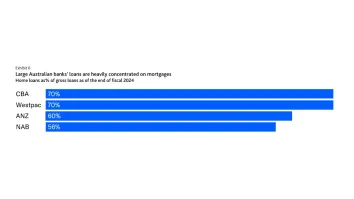
Chinese banks threatened by rising liquidity risks
How badly will they be affected?
According to Fitch Ratings, persistent tight liquidity conditions in China's financial sector could constrain the ability of some banks to meet upcoming obligations on maturing wealth-management products (WMPs) on a timely basis.
Fitch estimates that more than CNY1.5trn in WMPs - substitutes for time deposits - will mature in the last 10 days of June.
Here's more from Fitch Ratings:
Issuance of new products, and borrowing from the interbank market, are among the most common sources of repayment for maturing WMPs, and the recent interbank liquidity shortage complicates both. China's mid-tier banks, also known as joint-stock, are likely to face the most difficulty, with an average of 20%-30% of total deposits in WMPs. This compares with 10%-20% for state-owned and city/rural banks.
WMP payouts will exert further upward pressure on interbank interest rates, which hit all-time highs on 20 June. The seven-day interbank repurchase rate has averaged close to 7% since 6 June, more than double the 1 January-5 June average of about 3.3%.
The recent tightening in liquidity was sparked by a drop in foreign-exchange inflows and seasonal tightness associated with the mid-June holiday; quarter-end prudential requirements; and fiscal deposit submissions. But it has intensified, as the People's Bank of China (PBOC) has largely refrained from intervening. State banks are the primary beneficiaries of foreign-exchange inflows, and the drop in these flows is a key reason why recent tightness is being felt even among the largest lenders in the country.
The Chinese authorities have the ability to address the liquidity pressures, but their hands-off response to date reflects in part a new strategy to rein in the growth of shadow finance by constraining the liquidity available to fund new credit extension. We expect this approach to be more effective and swift in slowing shadow activity than previous efforts, which have focused predominantly on rules and regulation. But such an approach also increases repayment risk among banks, and raises the potential for a policy mis-step and/or unintended consequences.
Should authorities retain this policy stance, we would expect broad credit growth to decelerate more noticeably for the rest of 2013, following an unprecedentedly active Q113. We project our measure of broad credit - Fitch-adjusted total societal financing, which builds from the PBOC's total societal financing metric - to remain on a par with 2011-2012, at more than CNY18trn. But there is significant scope for the reality to be below forecast - should tight liquidity conditions persist or worsen into H213.
The CNY18trn figure may appear high, although an estimated CNY10trn in new credit had already been extended by end-May, leaving just over CNY1.1trn in average new credit per month for the rest of the year (January-May: CNY2trn per month). This credit deceleration will create a further drag on economic growth, which has been slowing down steadily since early 2010.



















 Advertise
Advertise










